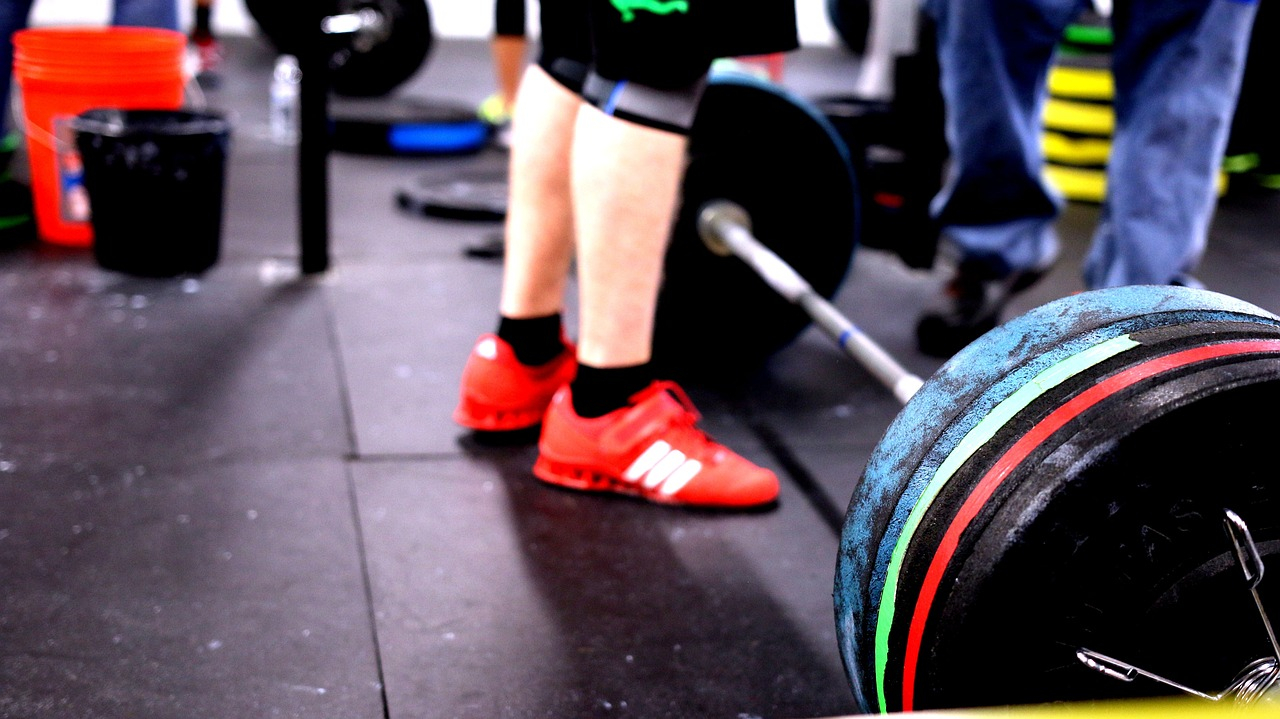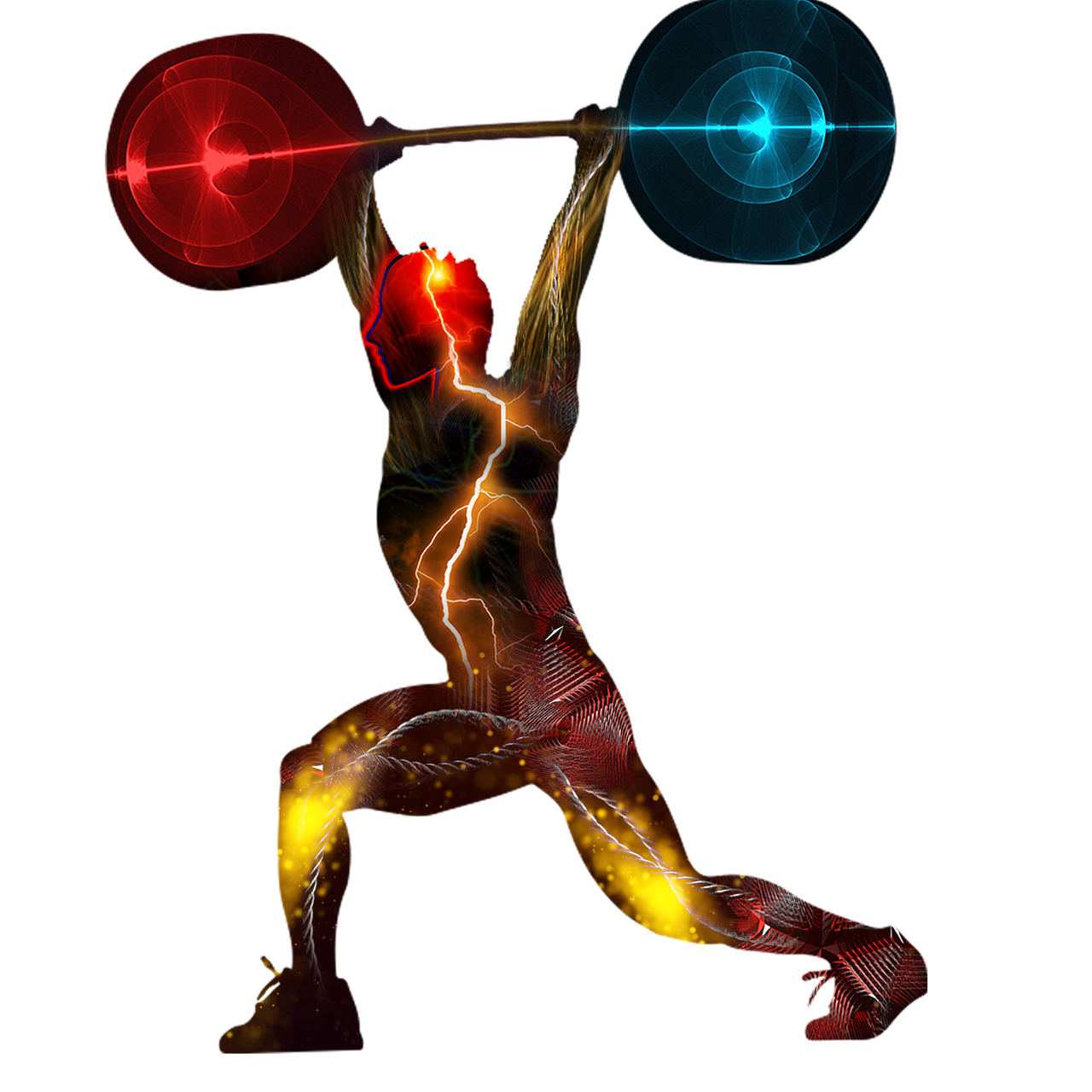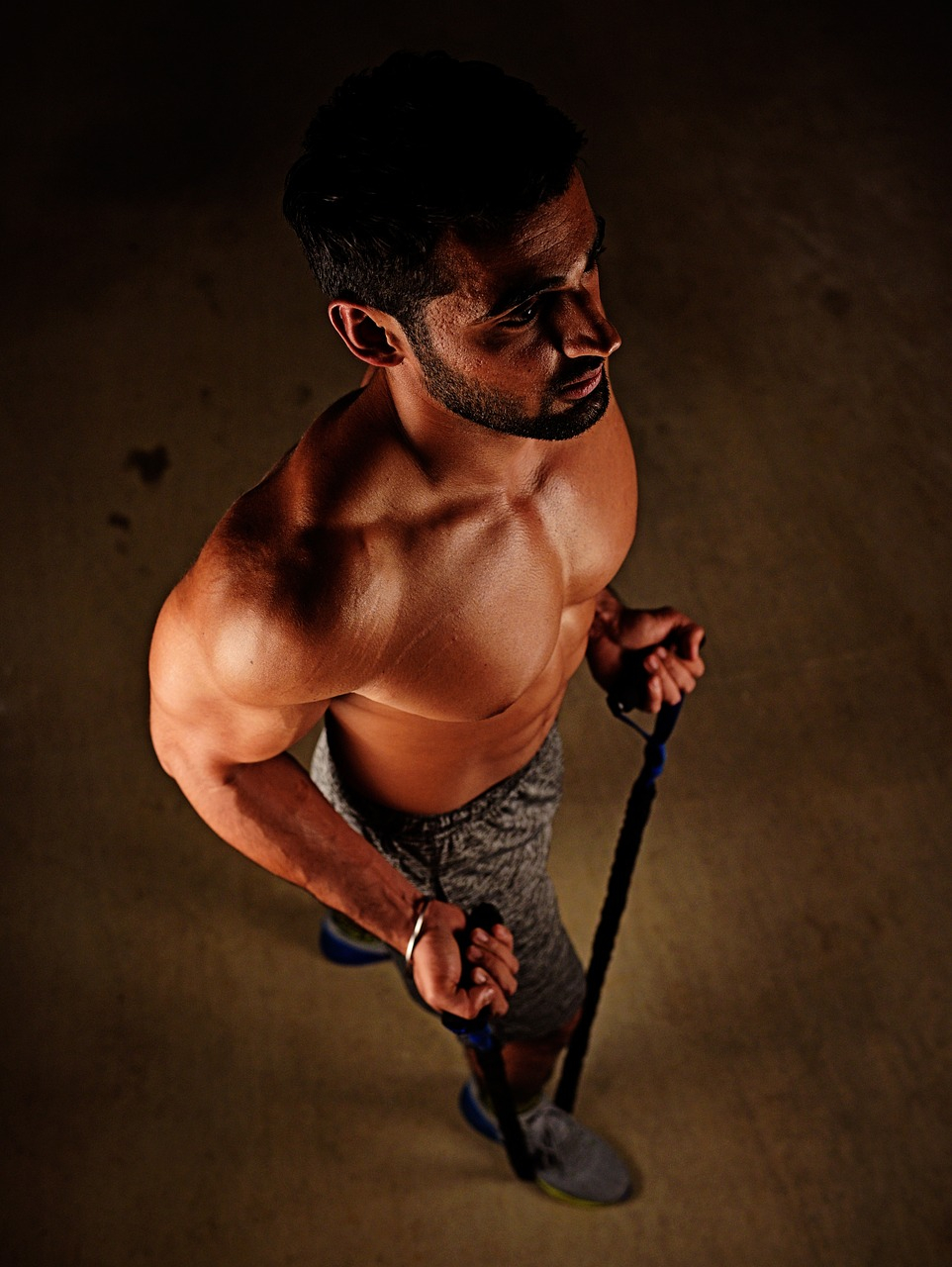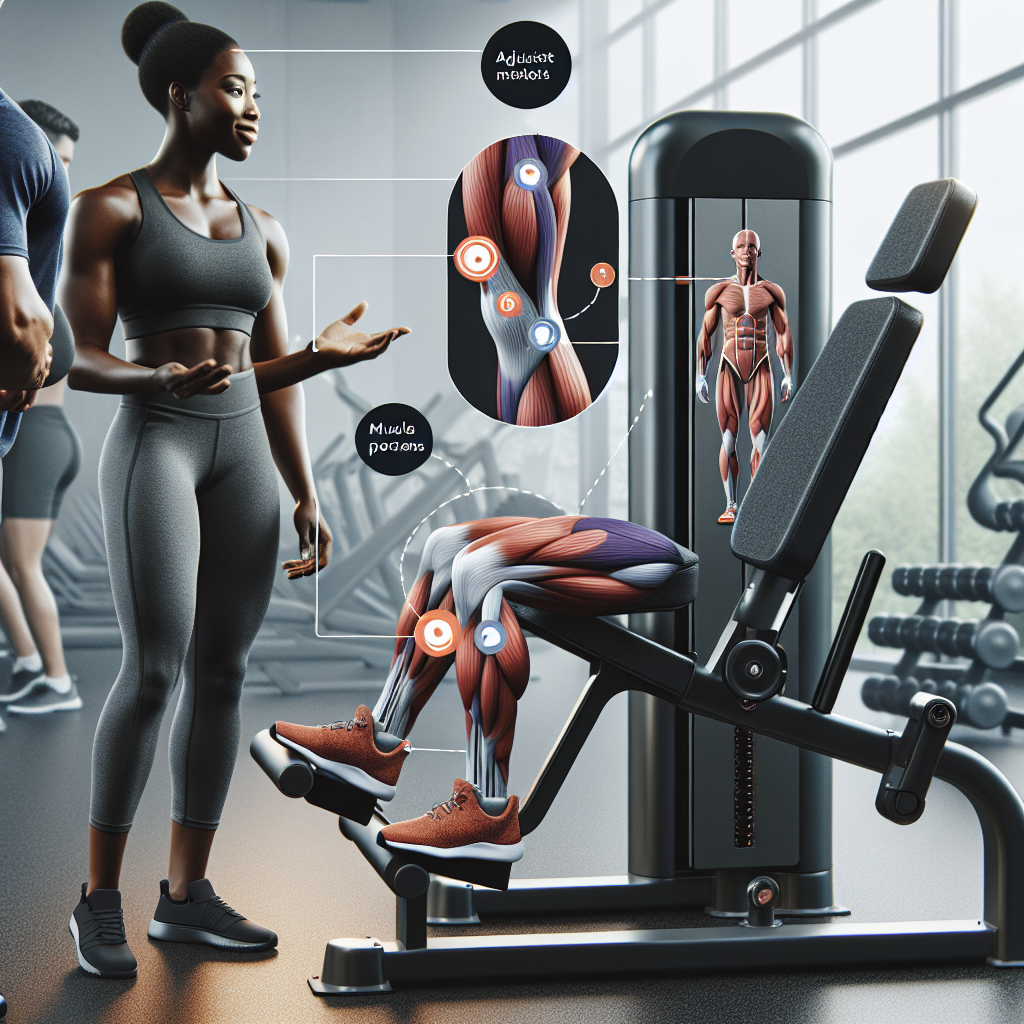How To Use Leg Machine At Gym
Are you excited to try out the new leg machine at the gym? It may seem a little intimidating at first, but don’t worry, it’s actually really easy to use! In this article, we will show you step by step how to set up the machine and use it properly. Whether you’re a beginner or an experienced gym-goer, you’ll be able to get a great leg workout with the help of this fantastic machine. So let’s get started and find out how to make the most of your leg workout at the gym!
Setting up the Leg Machine

Adjusting the seat position
Before using the leg machine, it is important to adjust the seat position to ensure proper alignment and comfort. Start by sitting on the seat with your back against the backrest. Your feet should be flat on the ground. If the seat is too high or too low, use the adjustment lever to raise or lower it until your knees are at a 90-degree angle when you place your feet on the footrest.
Setting the footrest position
Next, you need to set the footrest position. The footrest should be adjusted so that your feet are centered and flat on the footrest. Make sure that they are positioned about shoulder-width apart. If the footrest needs to be adjusted, use the provided adjustment lever to move it forward or backward until you find a comfortable position.
Choosing the desired weight
Before starting your leg exercises, you’ll need to choose the weight that is appropriate for your fitness level. Leg machines usually have a weight stack with multiple plates. Start with a lower weight to ensure proper form and prevent injuries. You can gradually increase the weight as you get stronger and more comfortable with the exercises. Remember, it’s better to start light and gradually increase the weight rather than starting with heavy weights and risking injury.
Securing your feet
To ensure your safety and stability, it is important to secure your feet on the footrest before starting any leg exercises. Most leg machines have straps or bars that you can use to secure your feet. Place your feet on the footrest and adjust the straps or bars around your ankles or the balls of your feet. This will help to prevent your feet from slipping and ensure proper alignment during the exercise.
Checking the range of motion
Before beginning any leg exercise, it is important to check the range of motion of the machine. This will help you understand how far you can safely move your legs without straining your muscles or joints. Start by performing a few repetitions with a lighter weight to determine the range of motion that feels comfortable for you. If you feel any discomfort or pain, adjust the machine accordingly or consult a fitness professional for guidance.
Warming up for Leg Exercises
Performing dynamic stretches
Warm-up exercises are essential before using the leg machine to prevent injuries and prepare your muscles for the workout. Start with dynamic stretches that involve moving your legs through a full range of motion. These can include leg swings, walking lunges, or high knees. Dynamic stretches help to increase blood flow to the leg muscles and improve flexibility.
Doing light cardio exercises
In addition to dynamic stretches, it’s also a good idea to do some light cardio exercises to warm up your legs further. This can include activities such as brisk walking, jogging, or cycling. Aim for about five to ten minutes of light cardio to get your heart rate up and increase blood flow to your leg muscles. This will prepare your muscles for the upcoming leg exercises.
Activating leg muscles with bodyweight movements
Before moving on to the leg machine, it’s beneficial to activate your leg muscles with bodyweight movements. These exercises help engage the muscles and prepare them for the resistance of the machine. Examples of bodyweight exercises that target the leg muscles include squats, lunges, and leg raises. Perform a few sets of each exercise to activate the major leg muscles such as the quadriceps, hamstrings, and glutes.
Using the Leg Machine for Leg Press
Positioning yourself on the machine
To use the leg machine for the leg press exercise, start by sitting on the seat with your back firmly against the backrest. Your feet should be flat on the footrest, positioned about shoulder-width apart. Keep your knees in line with your toes and your core engaged. Adjust the seat position and footrest as necessary to maintain proper alignment.

Placing your feet on the footrest
Once you are in the correct position on the machine, place your feet on the footrest with your heels resting comfortably against the footplate. Your toes should be slightly pointed outward. It’s important to maintain proper foot placement throughout the exercise to target the desired muscles effectively.
Performing the leg press movement
Now that you are properly positioned on the machine and have your feet in the correct placement, it’s time to perform the leg press movement. Push against the footrest and extend your legs until they are almost fully extended but without locking your knees. Pause for a moment and then slowly bend your knees, lowering the weight back to the starting position. Repeat this movement for the desired number of repetitions.
Breathing correctly during the exercise
Breathing properly during the leg press exercise is important to maintain stability and prevent straining. Inhale before you start extending your legs and exhale as you push against the footrest. Inhaling helps stabilize your core, while exhaling assists with exertion. Remember to breathe consistently throughout the entire exercise to ensure proper oxygen flow to your muscles.
Avoiding common mistakes
When using the leg machine for leg press, it’s important to avoid common mistakes that can lead to incorrect form or potential injuries. Some common mistakes include locking your knees at the top of the movement, allowing your back to round or lift off the backrest, or using excessive weight that compromises your form. Focus on maintaining proper form and using a weight that allows you to perform the exercise safely and effectively.
Targeting Quadriceps with the Leg Extension Machine
Adjusting the seat position
To target your quadriceps with the leg extension machine, start by adjusting the seat position. Sit on the seat with your back against the backrest and make sure your feet are flat on the ground. Adjust the seat height so that the leg pad is positioned just above your ankles. This will allow for proper alignment and effective targeting of the quadriceps muscles.
Positioning your legs and feet
Once the seat is properly adjusted, position your legs and feet on the leg extension machine. Place your legs under the leg pad, making sure your knees line up with the pivot point of the machine. Your knees should be at a 90-degree angle when your feet are resting flat against the footpad. Maintain proper foot placement throughout the exercise, with your toes pointing forward.
Performing the leg extension movement
To target your quadriceps with the leg extension machine, start by extending your legs, pushing against the footpad until your legs are almost fully extended. Pause for a moment at the top and then slowly lower the weight by bending your knees, returning to the starting position. This movement specifically targets the quadriceps muscles and helps to strengthen and tone them.
Applying proper breathing techniques
During the leg extension exercise, it’s important to breathe properly to maintain control and stability. Inhale before you start extending your legs and exhale as you push against the footpad. Inhaling helps stabilize your core, while exhaling assists with exertion. Make sure to breathe at a regular pace throughout the exercise to ensure proper oxygen flow to your muscles.
Preventing excessive strain on the knee
To prevent excessive strain on the knee while using the leg extension machine, it’s important to perform the exercise with proper form and within your range of motion. Avoid extending your legs beyond a fully straight position, as this can place undue stress on the knee joint. Additionally, avoid using excessive weight that may compromise your form or put unnecessary strain on your knees. If you experience any discomfort or pain, stop the exercise and consult a fitness professional for guidance.
Strengthening Hamstrings with the Leg Curl Machine

Adjusting the seat position
To target your hamstrings with the leg curl machine, start by adjusting the seat position. Sit on the seat with your back against the backrest and your feet flat on the ground. Adjust the seat height so that the leg pad is positioned just above your ankles. This will allow for proper alignment and effective targeting of the hamstring muscles.
Positioning your legs and feet
Once the seat is properly adjusted, position your legs and feet on the leg curl machine. Place the back of your lower legs against the leg pad, making sure your knees line up with the pivot point of the machine. Your knees should be at a 90-degree angle when your feet are resting flat against the ground. Maintain proper foot placement throughout the exercise.
Performing the leg curl movement
To target your hamstrings with the leg curl machine, start by curling your legs toward your glutes, squeezing your hamstrings as you lift the weight. Pause for a moment at the top and then slowly lower the weight by extending your legs. This movement specifically targets the hamstring muscles and helps to strengthen and tone them.
Maintaining proper form
While using the leg curl machine, it’s important to maintain proper form to effectively target the hamstrings and prevent injuries. Keep your core engaged and your back against the backrest throughout the exercise. Avoid using momentum or jerking motions to lift the weight, as this can put unnecessary strain on the muscles and joints. Focus on a slow and controlled movement to get the most out of the exercise.
Avoiding common errors
When using the leg curl machine, it’s important to avoid common errors that can compromise your form or cause discomfort. Some common mistakes include lifting your hips off the seat, allowing your back to arch, or using excessive weight that compromises your form. Start with a weight that allows you to perform the exercise with proper form and gradually increase it as you get stronger.
Building Glute Muscles with the Hip Abductor Machine
Setting up the machine
To target your glute muscles with the hip abductor machine, start by adjusting the seat position to align your knees with the pivot point of the machine. Sit on the seat with your back against the backrest and your feet flat on the ground. Adjust the seat height if necessary, ensuring proper alignment and comfort.
Positioning yourself correctly
Once the seat is properly adjusted, position yourself on the machine. Place your legs against the leg pads, just above your knees. Ensure that your feet are flat on the footrests and your knees are at a 90-degree angle. Maintain proper alignment throughout the exercise, keeping your core engaged and your back against the backrest.
Performing the hip abduction movement
To target your glute muscles with the hip abductor machine, start by pushing against the leg pads, moving your legs apart. Squeeze your glutes as you reach the fully extended position and hold for a moment. Slowly bring your legs back together, returning to the starting position. This movement specifically targets the glute muscles and helps to strengthen and tone them.
Concentrating on proper form
While using the hip abductor machine, it’s important to concentrate on maintaining proper form to effectively target the glute muscles and prevent injuries. Keep your core engaged and your back against the backrest throughout the exercise. Avoid using momentum or jerking motions to move your legs apart; instead, focus on a slow and controlled movement.

Increasing resistance gradually
To continue challenging your glute muscles and promoting growth, it’s important to gradually increase the resistance on the hip abductor machine. Start with a lighter weight that allows you to perform the exercise with proper form and gradually increase it as you get stronger. Aim for a weight that challenges you but still allows you to complete the desired number of repetitions with good technique.
Developing Calf Muscles with the Calf Raise Machine
Adjusting the machine to your height
To target your calf muscles with the calf raise machine, start by adjusting the machine to your height. Most calf raise machines have an adjustable pad or platform that you can use to position your feet. Adjust the machine so that your shoulders, hips, and ankles are in a straight line when your feet are flat on the platform.
Positioning your feet and calves
Once the machine is properly adjusted, position your feet on the platform. Your toes should be facing forward, and your heels should hang off the edge of the platform. Place your hands on the provided handles or hold onto the sides of the machine for stability. Keep your core engaged and maintain an upright posture throughout the exercise.
Performing the calf raise movement
To target your calf muscles with the calf raise machine, start by raising your heels as high as possible by pushing against the platform. Squeeze your calf muscles at the top of the movement and hold for a moment. Slowly lower your heels back to the starting position. This movement specifically targets the calf muscles and helps to strengthen and tone them.
Focusing on full range of motion
When using the calf raise machine, it’s important to focus on a full range of motion to effectively target the calf muscles. Lower your heels as far as possible without discomfort, feeling a stretch in your calves. Lift your heels as high as possible, really squeezing the calf muscles at the top of the movement. This full range of motion will help to maximize the benefits of the exercise.
Avoiding common mistakes
When using the calf raise machine, it’s important to avoid common mistakes that can compromise your form or cause discomfort. Some common errors include allowing your knees to bend or hyperextend, using excessive momentum to lift the weight, or neglecting to fully extend your ankles at the top of the movement. Focus on maintaining proper form and using a weight that allows you to perform the exercise with good technique.
Strengthening Adductor Muscles with the Hip Adductor Machine
Setting up the machine
To target your adductor muscles with the hip adductor machine, start by adjusting the machine to your height. Sit on the seat with your back against the backrest and your feet flat on the ground. Adjust the seat height if necessary, ensuring proper alignment and comfort.
Positioning yourself correctly
Once the machine is properly adjusted, position yourself on the machine. Place your legs against the leg pads, just above your knees. Make sure that your knees line up with the pivot point of the machine. Your feet should be flat on the footrests with your knees at a 90-degree angle. Maintain proper alignment throughout the exercise.
Performing the hip adduction movement
To target your adductor muscles with the hip adductor machine, start by pushing against the leg pads, moving your legs together. Squeeze your adductor muscles as you reach the fully closed position and hold for a moment. Slowly separate your legs, returning to the starting position. This movement specifically targets the adductor muscles and helps to strengthen and tone them.
Maintaining proper form
While using the hip adductor machine, it’s important to maintain proper form to effectively target the adductor muscles and prevent injuries. Keep your core engaged and your back against the backrest throughout the exercise. Avoid using momentum or jerking motions to move your legs together and apart; instead, focus on a slow and controlled movement.
Avoiding excessive strain
To prevent excessive strain on your adductor muscles, it’s important to use proper form and not overload the machine with too much weight. Start with a lighter weight that allows you to perform the exercise with good technique and gradually increase it as you get stronger. Listen to your body and stop if you experience any discomfort or pain. If you’re unsure about the proper weight or form, consult a fitness professional for guidance.
Safety Tips for Using the Leg Machine
Starting with lighter weights
When using the leg machine, it’s important to start with lighter weights and gradually increase the resistance as you get stronger. Starting with too much weight can compromise your form and increase the risk of injury. Begin with a weight that allows you to perform the exercise with good technique and slowly progress over time.
Maintaining control throughout the exercise
While using the leg machine, it’s crucial to maintain control throughout the entire exercise. Avoid using momentum or jerking motions to lift or lower the weight. Focus on a slow and controlled movement to engage the target muscles effectively and prevent strain on your joints.
Avoiding jerky movements
Jerky movements can increase the risk of injury. When using the leg machine, focus on smooth and controlled movements. Avoid sudden or jerky motions, as they can strain your muscles and joints. Take your time with each repetition, ensuring that you are moving in a controlled and deliberate manner.
Using a spotter if needed
If you are using heavy weights or attempting exercises that require assistance, it’s a good idea to have a spotter nearby. A spotter can provide guidance and support, ensuring your safety and helping with proper form. They can assist with placing your feet, adjusting the weight, and providing overall supervision during your leg exercises.
Listening to your body’s limitations
Every individual is different, and it’s important to listen to your body’s limitations when using the leg machine. If you feel any pain, discomfort, or excessive strain during an exercise, it’s crucial to stop and reassess. Don’t push through pain or discomfort, as it could be a sign of an injury. Instead, consult a fitness professional for guidance on modifying the exercise or to determine if there is an underlying issue.
Conclusion
Using the leg machines at the gym can be a great way to strengthen and tone your leg muscles. However, it is important to use these machines correctly and safely to avoid injuries. By following the proper setup instructions, warming up properly, and using the correct form, you can make the most out of your leg machine workouts.
Remember to adjust the seat position and footrest, choose the appropriate weight, and secure your feet before using any leg machine. Warm-up with dynamic stretches, light cardio exercises, and bodyweight movements to prepare your leg muscles. Then, follow the specific instructions for each leg machine exercise, focusing on proper form and breathing techniques.
Always listen to your body and avoid pushing through pain or discomfort. Gradually increase the resistance and challenge yourself over time, but prioritize safety and proper form. If you are unsure about how to use a leg machine or have any concerns, it is always a good idea to consult a fitness professional for guidance.
With consistency and gradual progression, leg machines can be an effective tool in strengthening your leg muscles and improving your overall fitness. So, get ready to unleash the power of your legs and enjoy the benefits of using leg machines at the gym!

